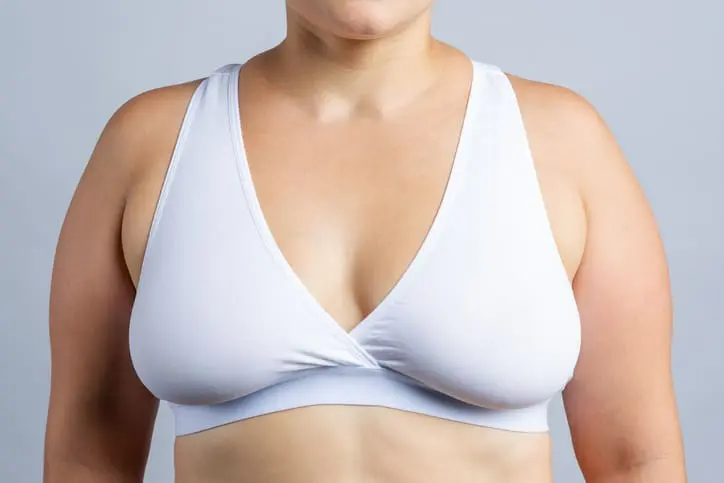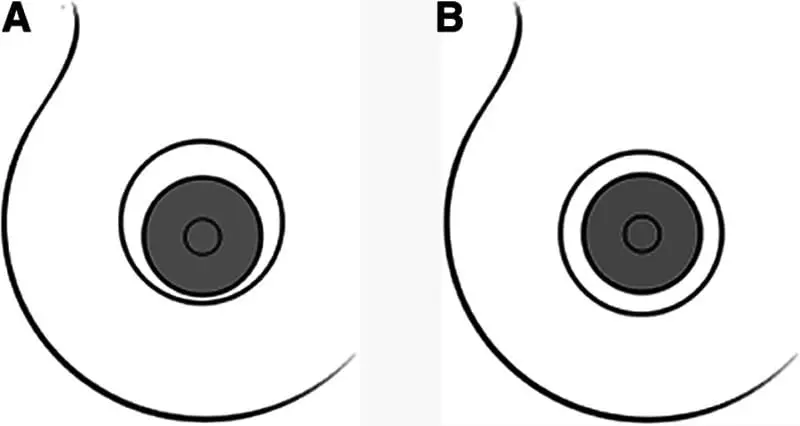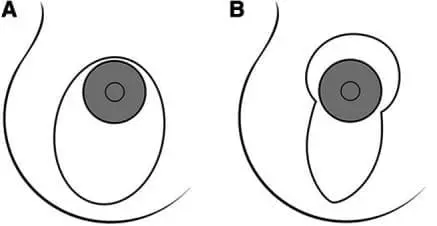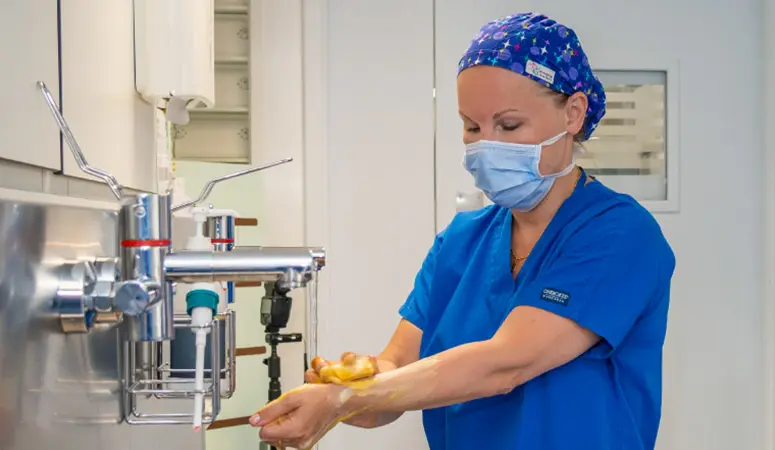
Plastic surgery expectations – what does a breast lift involve?
Published by
Elena Prousskaia
There are several reasons your breasts might start to sag including age, pregnancy breastfeeding or weight loss. A loss of skin elasticity combined with weight fluctuations can contribute to breast sagging over time. For some women, this insecurity can become overwhelming – getting a breast lift surgery can help restore your confidence.
The alternatives to cosmetic surgery may not offer a permanent solution. A support bra lifts the breasts so you can confidently wear your favourite outfits. Some non-invasive treatments such as radiofrequency can help tighten the skin and boost collagen production – this could be sufficient for patients with mild sagging.
If you have moderate to severe breast drooping, a mastopexy would be the preferred approach. The type of breast lift you’ll need depends on your current and desired breast shape. You can even combine the breast lift surgery with an augmentation for the best results.
Click on one of the links to jump to that section
-
Types of breast lift surgery
Learn the breast lift types and when each approach should be used
-
Where will my scars be?
Understand the cosmetic result from breast uplift in terms of scar positioning
-
Which breast lift is right for you?
Decide on the best approach for your breast shape and desired results
-
What to expect on the day of your surgery
Discover what your surgery day could look like and what it involves
Types of breast lift surgery
Over the years, specialist surgeons have modified breast lift techniques to achieve perfect results from almost any starting point – there are numerous different breast lift techniques. An experienced surgeon will be able to give you the perfect boobs, you’ll learn the specific approach at your initial assessment.
The types of breast lift can be categorised by the resulting scar: crescent, round block (periareolar), vertical scar and anchor. The anchor breast lift provides the most versatile and preferable outcome.

Crescent breast lift
The simplest breast lift technique removes a small amount of excess skin above the nipple and areola. A crescent-shaped incision is made along the upper edge of the areola. This technique shifts the nipple upwards by several centimetres.
Crescent breast lifts are used as a secondary breast lift procedure for correcting very minor sagging or low nipple position.
Round-block (periareolar)
Another similar technique to correct very mild sagging is the round-block approach. A small doughnut of breast skin is removed around the areola. An off-centre doughnut will raise the nipple position if necessary.
Your surgeon might recommend this secondary procedure if you have enlarged areolas or slight sagging. This technique can include areola reduction.

Source: PRS Global Open
Vertical scar breast lift
Mild to moderate breast sagging can be corrected using vertical scar breast lift surgery. This way, the surgeon can remove more excess skin and breast tissue whilst reshaping and lifting the breasts. Two examples of vertical scar breast lifts are shown in the diagram below:

Source: PRS Global Open
Check out our reviews

“I cannot emphasise enough how much my procedure with Elena changed my life”

Anchor scar breast lift
The most common breast lift, the anchor technique, corrects moderate to severe breast sagging. This technique has the widest scope for reconstruction and, therefore, offers the best cosmetic results.
Incisions around the areola and in the lower breast pole allow excess breast tissue and skin to be removed, the surgeon can also reposition the nipple. This approach sacrifices more breast volume so it’s usually paired with a breast augmentation – completed during the same operation. Your scars can be hidden on the underside of the breast. Examples of anchor lift techniques are shown below:

Source: PRS Global Open
Where will my scars be?
A skilled surgeon places breast surgery scars in discreet locations, easily hidden by a bikini or bra. Breast lift scars vary depending on the technique used.
-
An anchor-shaped scar from the anchor lift will circle the areola and travel down to the inframammary fold. Another horizontal scar is hidden in the breast crease.
-
A Vertical scar will circle the areola and also travel down from the areola to the inframammary fold. This scar position is chosen for its discreet position.
-
A round block breast lift scar will encircle the entire areola, leaving a discreet line.
-
A crescent breast lift scar will hardly be visible along the top edge of the areola.
Which breast lift is right for you?
|
Breast volume |
Mild Ptosis |
Moderate Ptosis |
Severe Ptosis |
|---|---|---|---|
|
Generous
|
Crescent or round-block breast lifts could provide your desired result. Alternatively, the vertical scar or anchor lift provides the opportunity for reducing breast size or altering your breast shape. |
The vertical scar and anchor breast lift will be the more favourable approaches. These may sacrifice some breast volume so you may want a breast augmentation to maintain your cup size. |
The anchor breast lift is the most suitable procedure for severe ptosis. This sacrifices some breast volume so many patients choose a secondary breast augmentation. |
|
Typical
|
Crescent or round-block lifts are useful as minimally-invasive procedures but vertical scar and anchor lifts help you achieve the perfect breast shape. Breast implants are available to supplement lost volume. |
Vertical scar lifts can be suitable for moderate ptosis however, most patients get the best cosmetic results from the anchor lift with breast augmentation. |
Anchor breast lifts with breast augmentation are the best approaches for severe ptosis. |
|
Deficient
|
The crescent or round-block lifts could supplement a breast augmentation. Alternatively, vertical scar or anchor breast lifts offer the best opportunity for breast reshaping. |
The anchor lift with breast augmentation provides the best cosmetic outcome. However, if you choose an implant-free approach the vertical scar could be suitable. |
You’ll need an anchor breast lift with augmentation to achieve the best cosmetic result. Discuss the best approach with your consultant surgeon. |
What to expect on the day of your surgery
Follow the advice from your surgeon on how to prepare for your procedure in the days leading up to it. When you arrive at the clinic, your surgeon will plan the surgical procedure and explain the process to you for the final time. This is another opportunity to clear up any remaining questions or queries – we want you to feel comfortable and reassured.
We’ll administer a general anaesthetic and the procedure should take 2-3.5 hours to complete. You’ll stay at the clinic overnight with nutritious meals to aid your recovery. Try to arrange for someone to drive you home after your stay, it’s important your wounds heal.
Pain expectations after a breast lift
You will have mild to moderate pain after the procedure which can be managed with medication. We’ll provide you with several days’ worth of pain medication. After three days, your pain should be manageable with over-the-counter analgesics and anti-inflammatories such as ibuprofen and paracetamol.
You’ll have drains in place to prevent fluid build-up during your initial recovery period (several hours). Breast swelling is normal after the procedure but you should report any excessive painful swelling, bleeding, blood pooling or severe pain as this could be a sign of a breast lift complication.
Frequently Asked Questions
Can a breast lift be combined with other procedures?
Yes, the breast lift is commonly combined with other procedures. A breast augmentation with a lift can help restore lost volume. Meanwhile, breast reductions are also commonly paired with a mastopexy for women with large, ptotic breasts. The Mummy Makeover is a common procedure which usually combines a breast lift with a breast reduction or augmentation, liposuction and a tummy tuck for a complete body transformation.
Can a breast lift reduce the areola?
Breast lifts offer the opportunity for a nipple and areola reduction (excluding the crescent breast lift). An incision around the areola allows the surgeon to remove a doughnut of skin if you have an enlarged areola.
Can you breastfeed after a breast lift?
A breast lift shouldn’t prevent you from breastfeeding. The procedure sacrifices some skin and tissue but preserves the nipples and functional mammary glands. If you choose to have a baby after a breast lift, you could see some additional breast sagging after finishing breastfeeding.
Sources
Share this article
Back to Advice Centre















